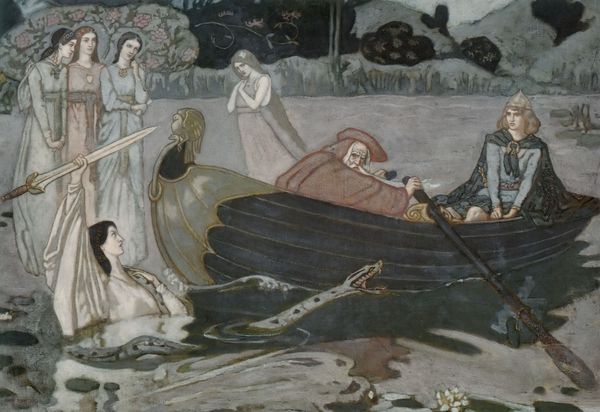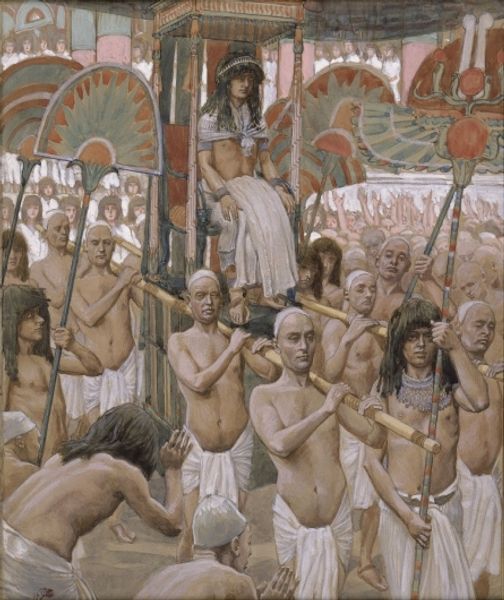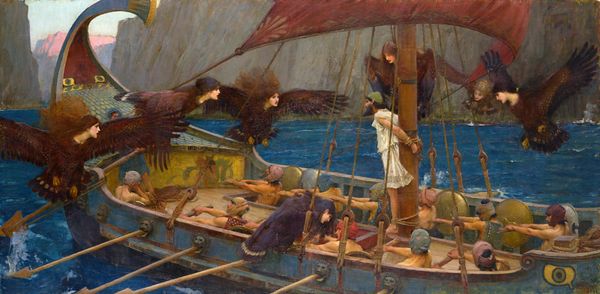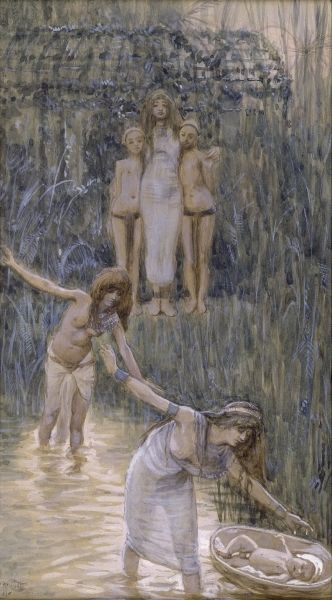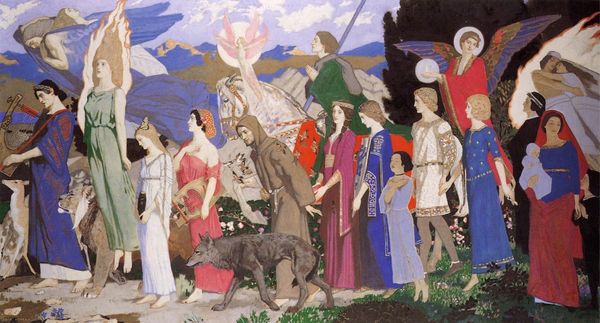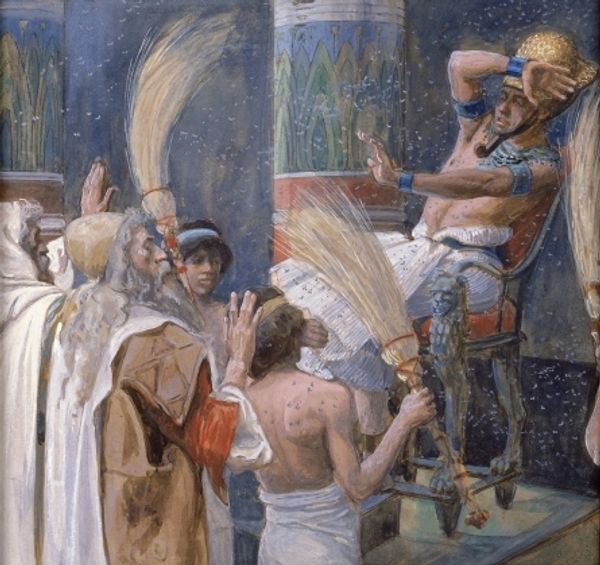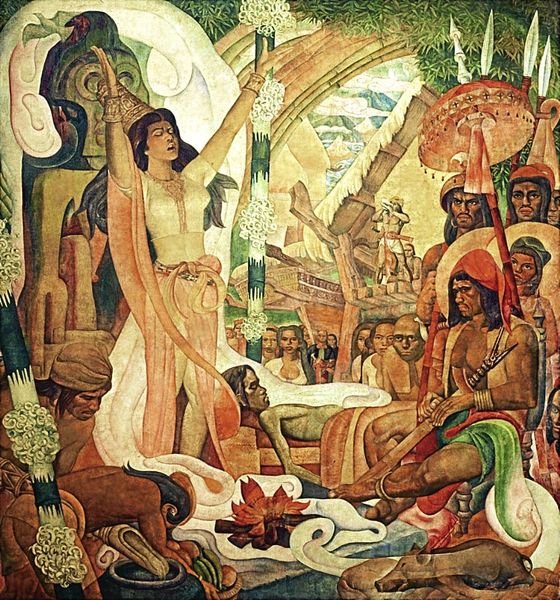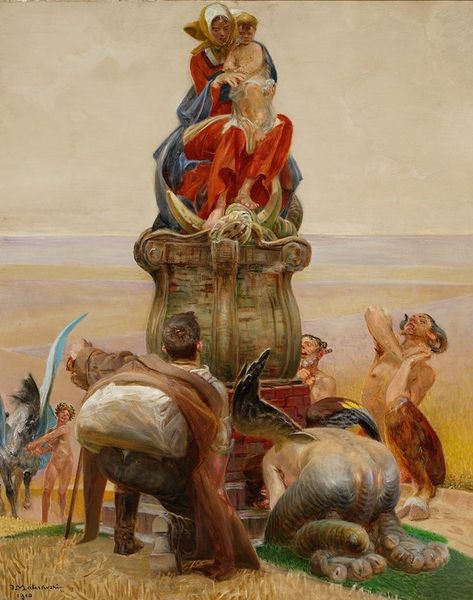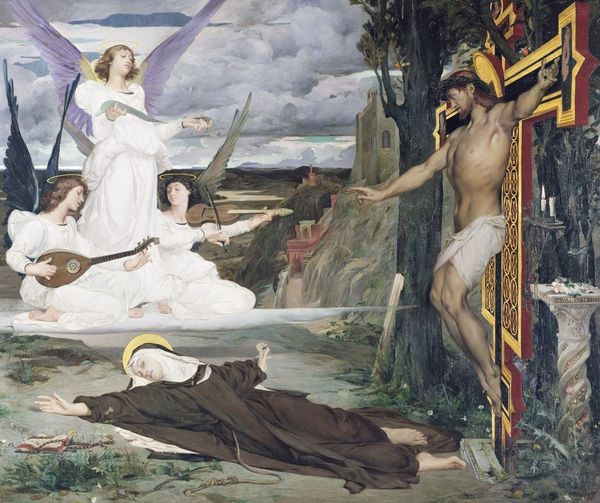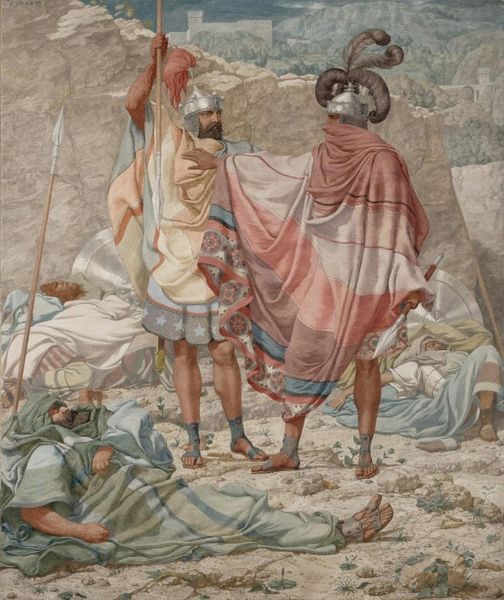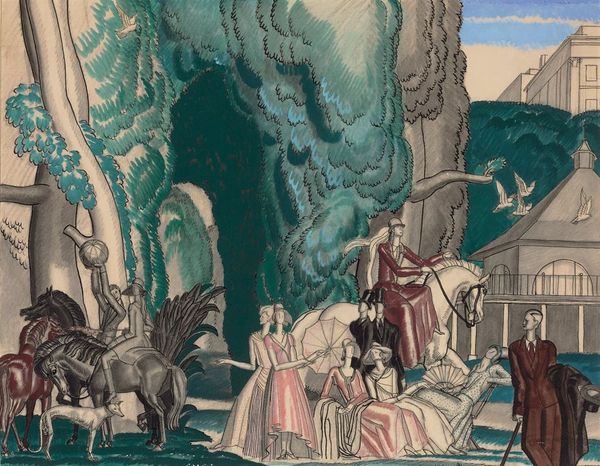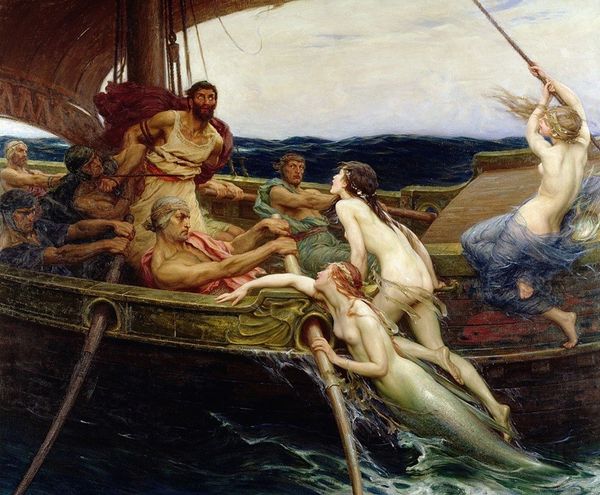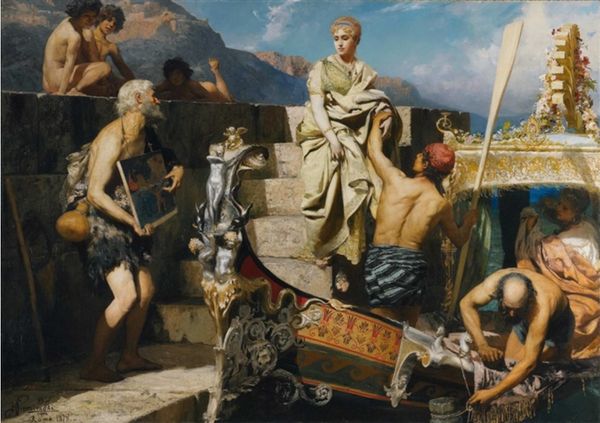
gouache
#
gouache
#
narrative-art
#
gouache
#
ancient-egyptian-art
#
oil painting
#
history-painting
#
watercolor
Copyright: Public domain
Editor: We're looking at James Tissot's gouache painting, "Pharaoh and the Midwives," from 1902. I find it quite striking how Tissot merges this historical moment with a tangible, almost dreamlike atmosphere. What stands out to you as you interpret this depiction of the Pharaoh and the midwives? Curator: Tissot is engaging in the complex game of representing biblical history for a modern audience. This work, part of a larger series illustrating the Bible, reflects the 19th-century's fascination with historical accuracy and its simultaneous urge to imbue such narratives with contemporary moral messages. Note how he’s not simply illustrating a biblical story; he is *staging* it. What impact do you think that theatricality has? Editor: It almost feels like a political performance – the midwives bowing, the Pharaoh enthroned high above them. Curator: Exactly. Tissot understands that imagery is always political. The power dynamics are visually emphasized, highlighting the social hierarchies inherent in the biblical narrative, which really tells a story of defiance against political tyranny. The artist is very carefully composing a very public narrative about morality. Who does this staging seem to be for? Editor: It must be for a largely Western audience, since Tissot's drawing on conventions of European history painting while dealing with an Old Testament subject. It really prompts you to think about the way powerful stories are constructed, doesn’t it? Curator: It does. And by making the implicit power relations explicit, Tissot is showing us how visual culture is manipulated. The way history is portrayed tells us much more about the moment of its portrayal, than it does of the past. I find that’s key in how Tissot operates here. Editor: I hadn't considered it quite that way. Now I see how Tissot’s choices reflect his own social context, using the biblical narrative to critique or comment on contemporary power structures. Thank you.
Comments
No comments
Be the first to comment and join the conversation on the ultimate creative platform.
